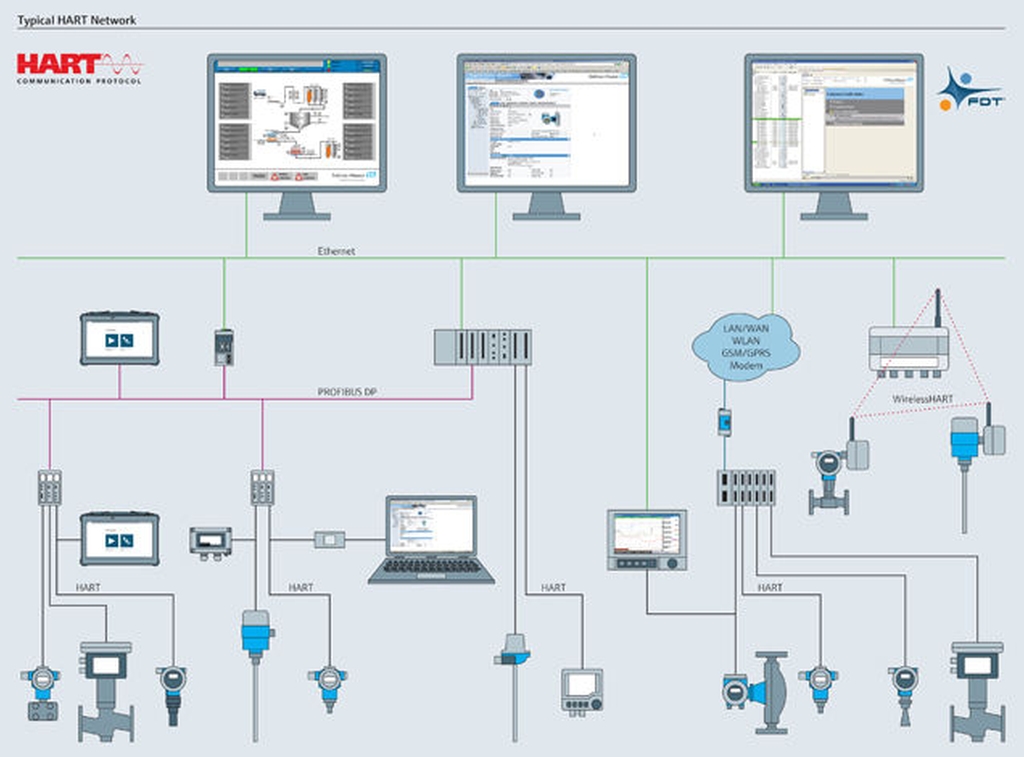Online TOC measurement offers quality control solution for ultrapure water
The measurement of TOC (total organic carbon) in water is of vital importance to a multitude of industries that need […]
Instrumentation selection in any process plant is among the most important considerations during initial design, upgrades and retrofits and daily operations. This selection process is multistep, requiring attention to process type, industry standards, approvals, sizing and more.
While tools like Endress+Hauser’s online applicator are a great resource to help end users identify the right instrument to meet their process requirements, it has now become equally important to ensure you are selecting the right digital data capabilities to accompany those instruments.
In today’s data-centric landscape, smart instrumentation provides a wealth of diagnostic information, enabling plant staff to get more from their instruments than 4-20mA process variable measurements. This information—transmitted via digital communication protocols—helps plant personnel improve plant efficiency and avoid unplanned shutdowns by empowering them to implement condition monitoring and proactive maintenance.
There are many factors that can interfere with the accuracy of a traditional instrument’s analog output. Sometimes, operators can struggle to verify whether the 4-20mA current signal is accurate. Additionally, communication is one-way only, so there is no way to send commands from a controller to the instrument.
Traditional analog instrumentation also lacks diagnostic information, making it nearly impossible to foresee instrument failure. These failures can cause unplanned downtime and costly instrumentation repairs in the best cases, or catastrophic equipment damage and safety hazards in the worst. Bound by analog electronics, these instruments must be hardwired to a host system, limiting placement in hard-to-reach areas of a facility, and especially in offsite remote locations.
Incorporating smart instrumentation into your plant designs allows your facility operation and optimization to become more manageable. These instruments incorporate digital communication protocols, sometimes in place of—and other times on top of—traditional analog communication protocols, greatly increasing capabilities and value.
For retrofitted and new applications where hardwiring transmitters back to a host system is convenient, instruments can use the two-way digital HART communication protocol. This is superimposed on the analog current loop to enable sending and receiving data with a calibration device or a host system. The exchanged data includes diagnostic, calibration, maintenance, process and other information, greatly increasing configuration ease and operational process insights.

These HART-enabled instruments can transmit multiple process values to a controller via a single loop. This provides the flexibility to continue using existing analog loops for real-time control. This enables process and diagnostic data available via HART to make data-driven decisions within your facility.
Additionally, data transmission is available through Fieldbus and ethernet-based protocols. These provide many of the same benefits as HART, but typically operate at much higher speeds, allowing more information to be included.
Where wired implementations are impossible or inconvenient, wireless smart instruments provide solutions via 2.4 GHz radio wave protocols, notably WirelessHART, WLAN and Bluetooth. Many smart instruments provide these connectivity options natively, while adapters can be added to provide this functionality for those that do not. These capabilities can be used to create a mesh network of sensors around a plant and in the field.

WirelessHART and Bluetooth instruments typically send and receive as much or more diagnostic and process data as their wired HART counterparts. While this data can provide immense benefits to a wide range of host systems and applications, many facilities do not take full advantage of what this data has to offer. The result is missed opportunities to optimize, simplify and safeguard their plant operations.
When this data is ingested by intelligent plant analysis systems, facilities increase their proactive maintenance and condition monitoring which reduces unplanned downtime and cuts costs, while lessening equipment and human safety hazards. For example, instead of waiting to get an alert indicating a high-temperature condition, process data can be used proactively to alert personnel when conditions are detected that could lead to high temperature issues.
When this diagnostic data is integrated into host systems, it can be analyzed to provide advance warning of instrument failure or provide troubleshooting insight in the event of failure. Because calibration and nameplate information are also internally stored in each instrument, tracking and managing assets is easier throughout plant lifecycles.
For a look at how diagnostic data is being effectively used in conjunction with multivariable process data to automatically calibrate instruments online, predict failures and improve process efficiency, check out the following case studies:
The measurement of TOC (total organic carbon) in water is of vital importance to a multitude of industries that need […]
Temperature measurement is a decisive factor in many industrial processes. Across all industries, accurate, fast and reliable measurement of process […]
When it comes to finding the right level technology for the specific needs within your industry, it can be a […]
Comments